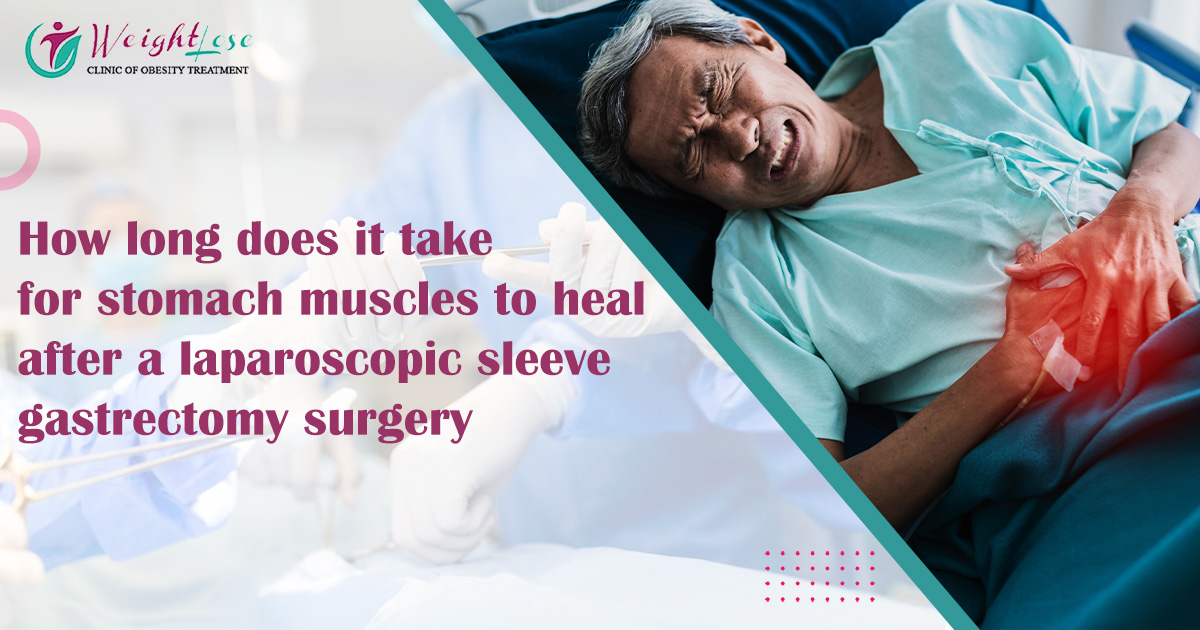Undergoing a laparoscopic sleeve gastrectomy (LSG) surgery is a significant step towards achieving weight loss and improving overall health. However, the recovery process following this procedure is equally important and requires patience and adherence to post-operative guidelines. One common concern among patients is the healing time for stomach muscles after LSG surgery. DrTarun Mittal, an exceptional Sleeve Gastrectomy Surgeon in Delhi unveil various details regarding sleeve gastrectomy surgery and the time taken during the healing process. In this blog, we'll explore this topic in detail and provide insights into what to expect during the recovery period.
The Healing Process
Dr Mittal, the renowned Sleeve Gastrectomy in surgery Delhi mentions that After undergoing laparoscopic sleeve gastrectomy surgery, the stomach undergoes significant changes, including the removal of a portion of the stomach and reshaping it into a smaller, sleeve-shaped pouch. As a result, the surrounding muscles and tissues undergo trauma and require time to heal and adapt to the new anatomical structure.
Initial Recovery Period
In the immediate postoperative period, patients can expect to experience some discomfort, pain, and swelling around the surgical incision sites. This is normal and typically resolves within a few days as the body begins the healing process. Patients are encouraged to follow their surgeon's instructions regarding pain management, activity levels, and dietary guidelines during this time.
Healing Timeline
The healing timeline for stomach muscles after LSG surgery can vary from patient to patient and depends on various factors such as overall health, adherence to post-operative instructions, and the extent of the surgical procedure. However, in general, most patients can expect the following phases during the recovery process:
First Few Weeks: During the initial weeks following LSG surgery, patients are advised to follow a liquid or pureed diet to allow the stomach to heal and adjust to its new size. It's essential to avoid strenuous activities and heavy lifting during this time to prevent complications and promote optimal healing.
Four to Six Weeks: By the end of the first-month post-surgery, most patients will have transitioned to a soft or semi-solid diet, depending on their surgeon's recommendations. While some discomfort and bloating may still be present, patients should notice gradual improvements in their overall well-being and energy levels.
Six Weeks to Three Months: As the healing process progresses, patients can gradually reintroduce solid foods into their diet, focusing on small, frequent meals and chewing food thoroughly to prevent discomfort or nausea. It's essential to continue following dietary guidelines and incorporating regular physical activity to support weight loss and maintain muscle tone.
Three Months and Beyond: By the three-month mark, most patients will have adapted to their new eating habits and lifestyle changes. While some residual discomfort or bloating may occur occasionally, it should continue to improve over time. Patients are encouraged to attend follow-up appointments with their surgeon and participate in ongoing support programs to monitor progress and address any concerns.
Conclusion
The healing time for stomach muscles after laparoscopic sleeve gastrectomy surgery varies from patient to patient but generally follows a predictable timeline. By following post-operative instructions, adhering to dietary guidelines, and maintaining regular physical activity, patients can support the healing process, achieve successful weight loss outcomes, and enjoy improved overall health and well-being in the long term. It's essential to consult with a qualified Sleeve Gastrectomy Surgeon in Delhi like Dr Tarun Mittal for personalized guidance and support throughout the recovery journey.


